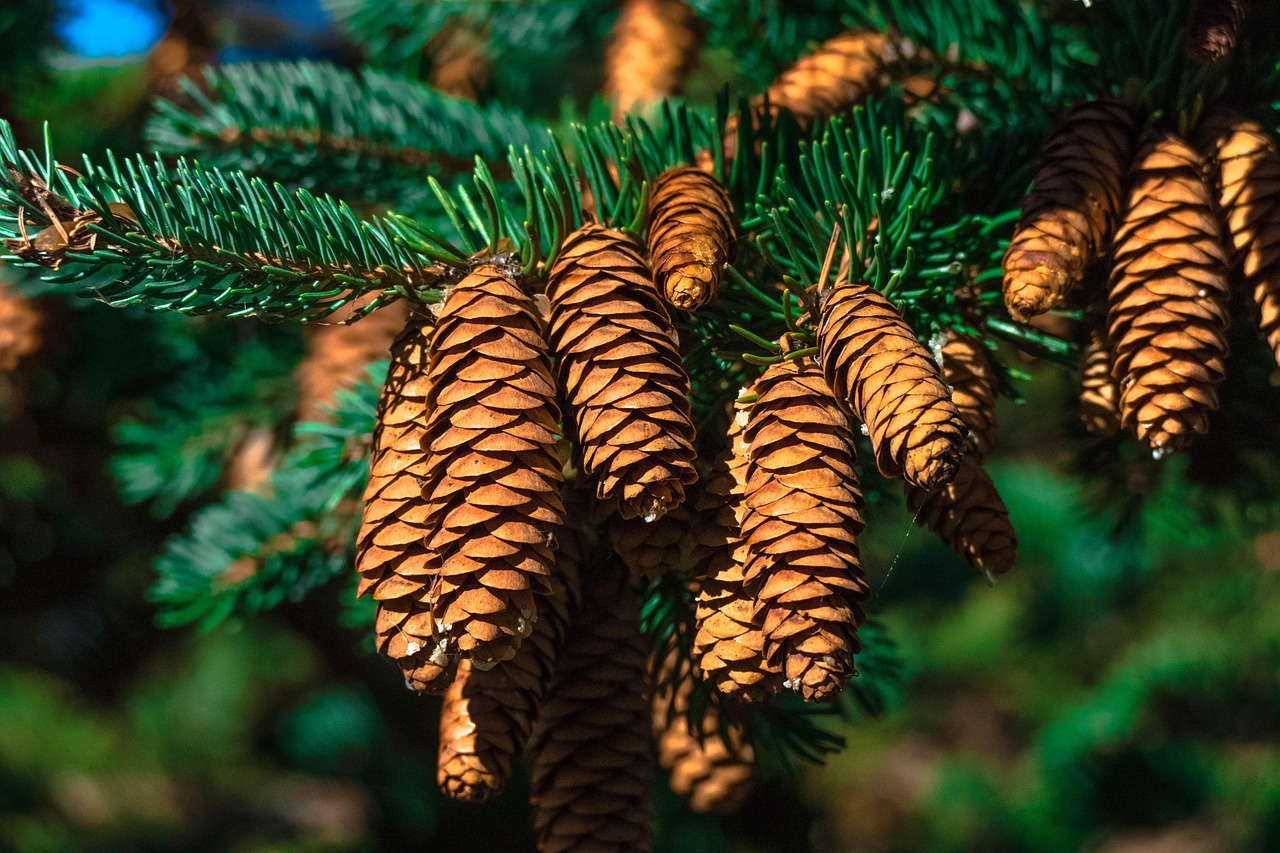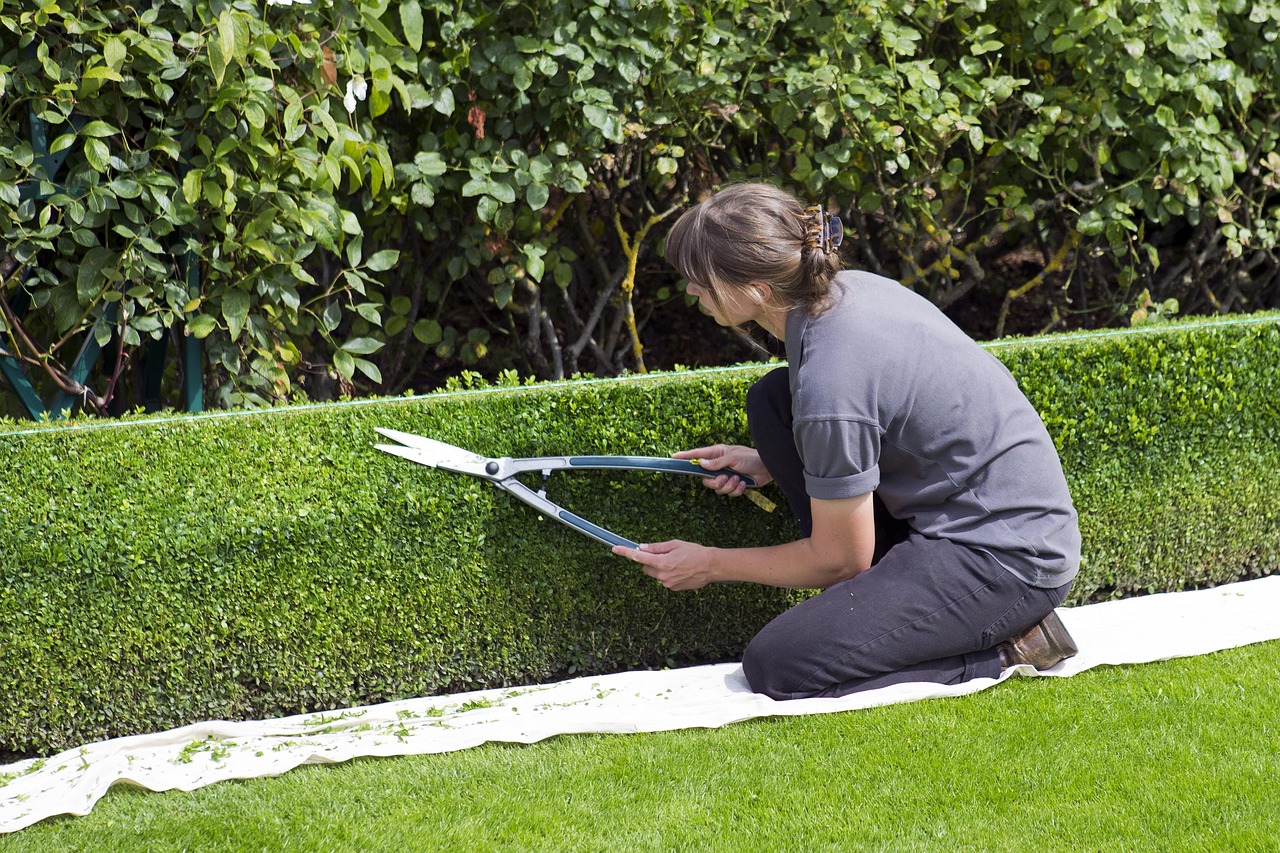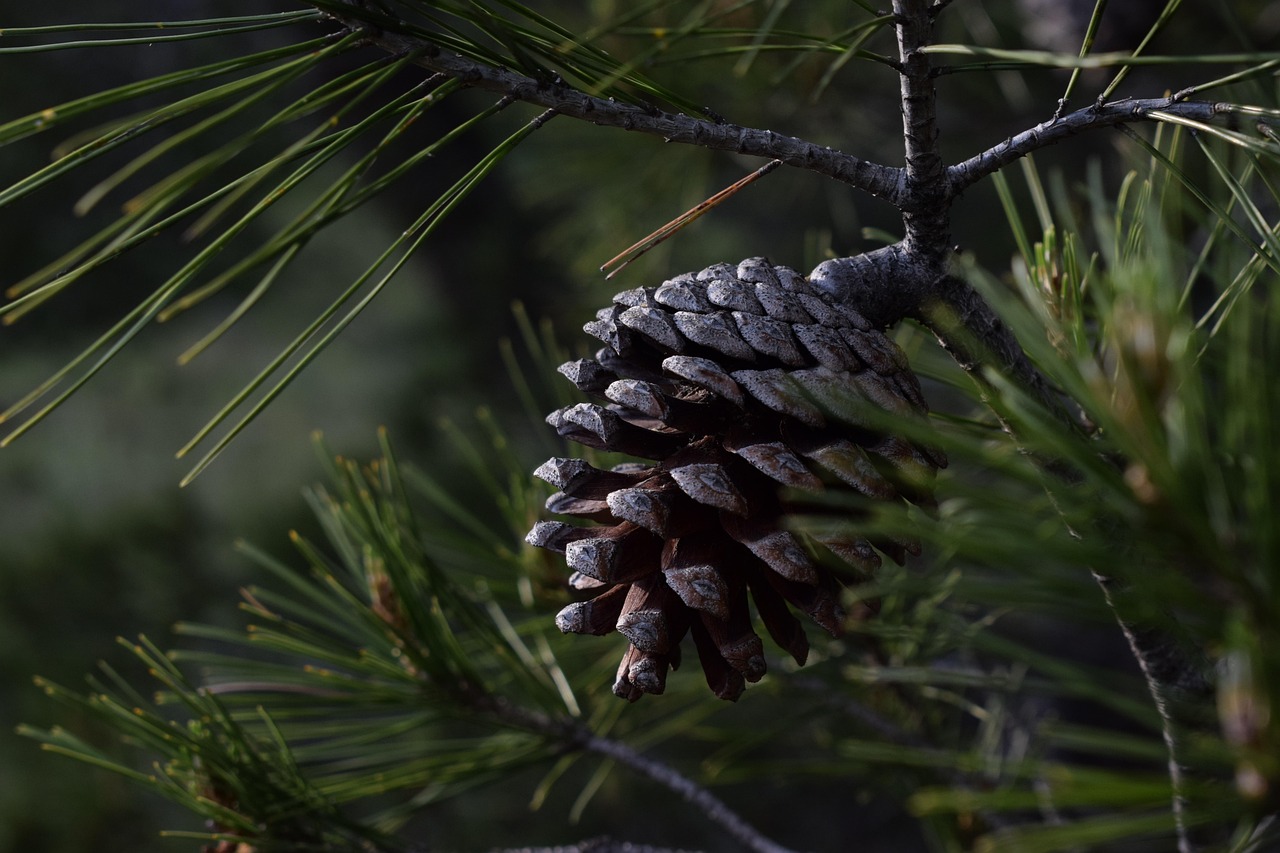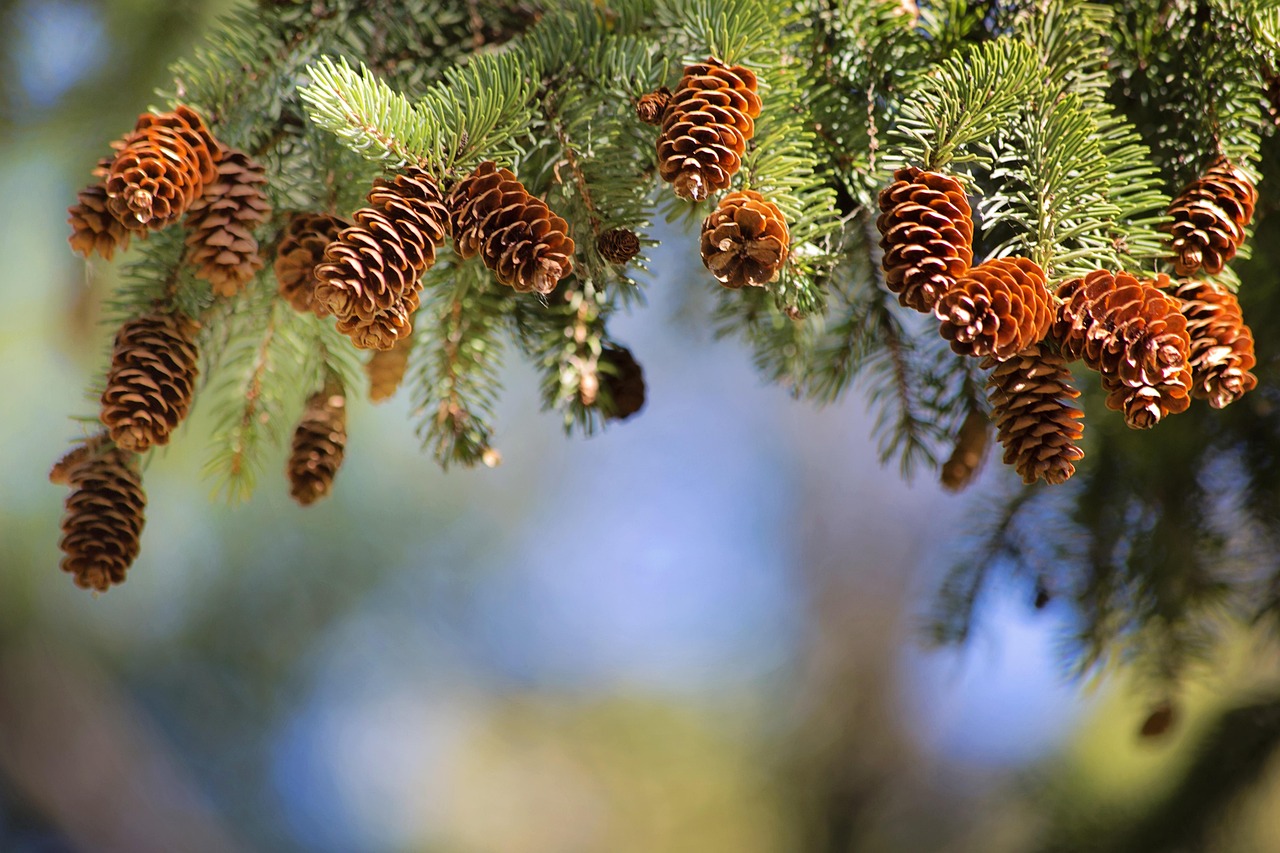To safely trim overgrown pine trees, use the right tools such as pruning shears, loppers, and chainsaws. Employ techniques like crown thinning, lateral pruning, and proper cutting angles to minimize damage. Always prioritize safety by wearing protective gear and taking precautions against falling branches.
Understanding the Importance of Trimming Pine Trees

Pine trees are a popular choice for landscaping due to their beauty and resilience. However, when left untrimmed, they can become overgrown. This not only affects their aesthetic appeal but can also lead to health issues for the tree and surrounding plants. Regular trimming is essential to maintain the health of the tree, promote healthy growth, and ensure safety in your yard.
Overgrown pine trees can lead to several problems, including:
- Weak Structure: Excessive growth can result in weak branches that are prone to breaking.
- Pests and Diseases: Dense foliage can attract pests and diseases, leading to further complications.
- Reduced Airflow: Poor air circulation can create a humid environment, fostering fungal growth.
- Safety Hazards: Low-hanging branches can pose a risk to people and property.
Choosing the Right Tools for the Job
Selecting the appropriate tools for trimming pine trees is crucial for both efficiency and safety. Here are some essential tools you should consider:
| Tool | Description | Best For |
|---|---|---|
| Pruning Shears | Ideal for small branches and fine trimming. | Light pruning tasks. |
| Loppers | Long-handled for leverage, suitable for thicker branches. | Medium-sized branches up to 2 inches thick. |
| Chainsaw | Powerful tool for large branches and tree removals. | Heavy-duty trimming and cutting. |
Each tool serves a specific purpose. It is important to choose the right tool based on the thickness of the branches you intend to cut. Additionally, having safety gear such as gloves, goggles, and a hard hat is vital when working with sharp tools to prevent injuries.
Techniques for Safe Trimming
Proper techniques can make a significant difference in how well your pine trees respond to trimming. Here are some effective methods:
- Crown Thinning: This technique involves selectively removing branches to increase light penetration and airflow through the tree.
- Lateral Pruning: Focus on trimming lateral branches to encourage upward growth. This helps maintain the shape of the tree.
- Proper Cutting Angles: Always cut at an angle to prevent water from pooling on cut surfaces, which can lead to rot.
By employing these techniques while using the correct tools, you can ensure that your pine trees remain healthy and structurally sound. Remember that timing is also crucial; the best time to trim most pine trees is during late winter or early spring before new growth begins.
Safety Precautions When Trimming Pine Trees
Trimming pine trees can present various hazards. To ensure a safe trimming experience, it is essential to take adequate precautions. Here are some key safety measures to implement:
- Wear Protective Gear: Always wear safety goggles, gloves, and a hard hat to protect yourself from falling debris and sharp tools.
- Check the Weather: Avoid trimming on windy or rainy days. Wet conditions can make tools slippery and increase the risk of accidents.
- Inspect Your Tools: Before starting, check that all tools are in good condition. Sharpen blades and replace any damaged parts to ensure effective cutting.
- Clear the Area: Remove any obstacles and debris from the area around the tree to create a safe workspace.
Understanding Tree Anatomy
To effectively trim your pine trees, it is helpful to understand their anatomy. Familiarity with the structure can aid in making informed decisions about where to cut. Here are the main components of a pine tree:
- Roots: These anchor the tree and absorb nutrients and water from the soil.
- Trunk: The trunk supports the tree and transports nutrients between the roots and branches.
- Branches: These extend from the trunk and bear leaves. Proper pruning encourages healthy branch growth.
- Crown: The top part of the tree where branches and foliage are located. Thinning this area can improve light exposure.
Understanding these components will help you identify which areas need trimming and how to promote healthy growth in your pine tree. Knowing when to prune specific parts is equally important for maintaining the tree’s health.
Best Practices for Trimming Overgrown Pine Trees
Implementing best practices during trimming can enhance the results and minimize damage. Here are several effective strategies to follow:
- Start with Dead or Diseased Branches: Begin by removing any dead or diseased branches. This helps prevent the spread of disease and promotes healthy growth.
- Aim for Symmetry: Maintain a balanced look by trimming branches evenly around the tree. This not only enhances aesthetics but also supports even growth.
- Limit Cuts: Avoid excessive trimming. Cutting too much can stress the tree. A good rule of thumb is to remove no more than 25% of the tree’s foliage in one session.
- Use Clean Cuts: Make clean cuts without tearing the bark. This facilitates faster healing and reduces the risk of infection.
Seasonal Considerations for Trimming
The timing of your trimming efforts plays a vital role in the health of your pine trees. Different seasons offer unique advantages:
- Late Winter/Early Spring: This is often the best time to trim most pine trees before new growth begins. The dormant season minimizes stress on the tree.
- Summer: Light trimming can be done during summer months to maintain shape, but heavy pruning should be avoided as it can expose trees to stress and disease.
- Fall: Avoid heavy trimming in fall. Trees are preparing for dormancy, and cutting back may hinder their natural processes.
By considering seasonal factors, you can optimize your trimming schedule. It ensures that your pine trees remain healthy while minimizing any potential damage from incorrect timing.
When to Call a Professional

While many homeowners can manage basic trimming, there are situations where enlisting a professional arborist is advisable. Here are some signs that indicate it may be time to seek expert help:
- Large Trees: If your pine tree is exceptionally tall or wide, professional equipment may be necessary for safe trimming.
- Difficult Access: Trees located near power lines or other hazards require specialized skills and tools.
- Extensive Damage: Trees with extensive damage or disease should be evaluated by an expert to determine the best course of action.
A certified arborist can provide valuable insights and ensure that your trees receive the care they need without risking safety or health issues.

Maintaining Your Tools for Effective Trimming
Proper maintenance of your trimming tools is essential for safe and efficient pine tree care. Well-maintained tools not only make the job easier but also enhance safety. Here are key steps to ensure your tools remain in excellent condition:
- Regular Cleaning: After each use, clean your tools to remove sap, dirt, and debris. This prevents rust and maintains sharpness.
- Sharpen Blades: Dull blades can tear branches and cause damage. Regularly sharpen your pruning shears, loppers, and chainsaw blades.
- Inspect for Damage: Check tools for any signs of wear or damage. Look for cracks, loose handles, or rusty parts that need replacement.
- Oil Moving Parts: For tools with moving parts, apply lubricant to prevent rust and ensure smooth operation.
By taking these steps, you can extend the lifespan of your tools and ensure they perform well when you need them most.
Understanding the Different Pine Species
Pine trees come in various species, each with unique growth patterns and characteristics. Understanding these differences can guide your trimming approach. Here are some common pine species:
| Pine Species | Characteristics | Trimming Considerations |
|---|---|---|
| Eastern White Pine | Tall and straight with long needles. | Prune in late winter to promote healthy growth. |
| Scots Pine | Hardy tree with a strong trunk. | Thin out lower branches for better shape. |
| Loblolly Pine | Fast-growing with a dense crown. | Crown thinning is effective for air circulation. |
By recognizing the specific needs of each pine species, you can tailor your trimming techniques appropriately. This ensures optimal growth and health for your trees.
Signs That Your Pine Tree Needs Trimming
Being able to identify when your pine tree requires trimming is crucial. Regular observation can help you catch issues early. Here are some signs to watch for:
- Overgrown Branches: If branches are encroaching on structures or pathways, it’s time to trim.
- Dead or Brown Needles: Foliage that appears dead or discolored can indicate disease or stress that needs addressing.
- Crowded Canopy: If the canopy appears thick and congested, it may benefit from thinning to improve light penetration.
- Weak Branches: Notice any branches that appear weak or are drooping? These should be trimmed to prevent breakage.
By staying vigilant and addressing these signs promptly, you can help maintain your pine trees’ health and appearance.
Environmental Impact of Trimming Practices
Trimming practices can have an environmental impact that should not be overlooked. Responsible trimming contributes to the overall ecosystem health. Here are some considerations:
- Biodiversity: Properly maintained trees can support local wildlife by providing habitat and food sources.
- Aesthetic Value: Well-trimmed trees enhance landscape beauty, contributing positively to community environments.
- Air Quality: Healthy trees improve air quality by filtering pollutants and producing oxygen.
By adopting eco-friendly trimming practices, you can positively influence your local environment while keeping your pine trees healthy and vibrant.
Long-Term Care for Pine Trees

Once you have trimmed your pine trees, ongoing care is essential to ensure their health and stability. Regular maintenance practices can help sustain the benefits of trimming and promote robust growth. Here are some key practices to adopt:
- Watering: Ensure your pine trees receive adequate water, especially during dry spells. Young trees may require more frequent watering until established.
- Fertilization: Apply a balanced fertilizer in the spring to provide essential nutrients. This promotes healthy growth and supports recovery from trimming.
- Pest Management: Monitor for pests and diseases regularly. Early detection allows for timely intervention, minimizing damage.
- Mulching: Adding mulch around the base of the tree helps retain moisture, suppress weeds, and regulate soil temperature.
Implementing these long-term care practices will enhance the overall resilience of your pine trees and help them thrive in your landscape.
Common Mistakes to Avoid
Even experienced gardeners can make mistakes when trimming pine trees. Being aware of common pitfalls can help you avoid them. Here are some mistakes to steer clear of:
- Ignoring Tree Health: Always assess the tree’s health before trimming. Trimming a sick tree can exacerbate its issues.
- Over-Pruning: Removing too many branches at once can lead to stress and stunted growth. Stick to the 25% rule as much as possible.
- Improper Cuts: Making cuts too close to the trunk or leaving stubs can lead to infections. Use proper cutting techniques for clean cuts.
- Neglecting Safety: Failing to use safety gear or taking unnecessary risks can result in injury. Always prioritize safety during the trimming process.
Avoiding these mistakes will help ensure a successful trimming experience and contribute positively to the health of your pine trees.
Resources for Further Learning
If you wish to expand your knowledge on pine tree care and trimming techniques, consider exploring additional resources. Here are some valuable options:
- Books: Look for books focused on tree care and gardening. Titles that specifically address conifers or pines can be particularly useful.
- Online Courses: Many horticulture organizations offer online classes covering tree pruning techniques and maintenance practices.
- Local Workshops: Check with local gardening clubs or extension services for workshops on tree care, which often include hands-on demonstrations.
- YouTube Channels: Numerous gardening experts share videos that provide visual demonstrations of proper trimming techniques and tree care advice.
Utilizing these resources will provide you with a deeper understanding of safe and effective trimming practices, enhancing your overall gardening skills.
Final Thoughts
Safely trimming overgrown pine trees is a vital aspect of maintaining their health and ensuring safety in your landscape. By using the right tools, implementing effective techniques, and adhering to safety precautions, you can achieve excellent results that contribute positively to both the appearance and vitality of your trees. Remember that ongoing care is just as important as trimming; regular maintenance will help your pine trees flourish over time.
As you continue your journey in tree care, stay informed about best practices, recognize when professional help is needed, and embrace the knowledge that comes from experience. With dedication and proper techniques, your pine trees will thrive and enhance your outdoor space for years to come.
